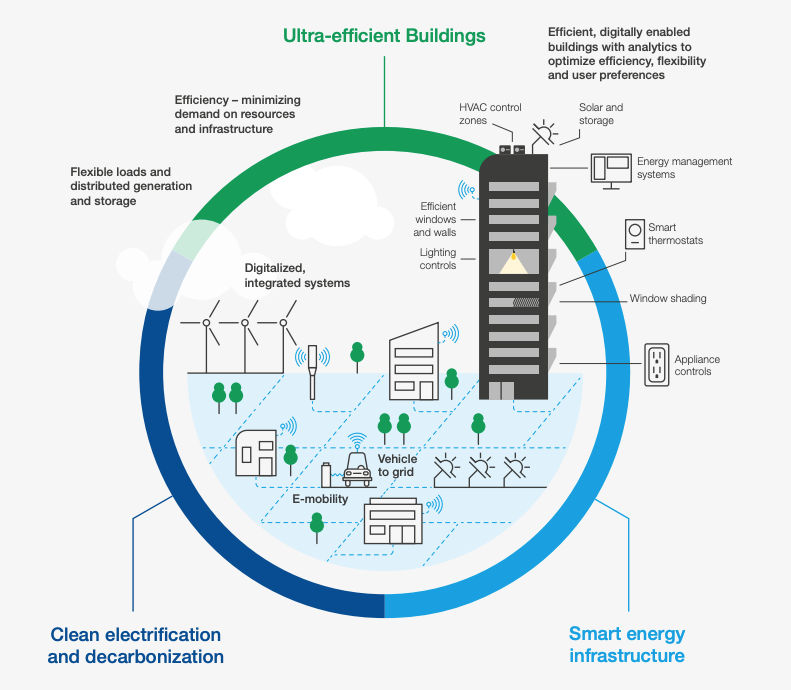These 7 cities are tackling heatwaves with innovative solutions
Heatwaves are making cities like Sydney hotter.
Image: Unsplash/Eggzy Pallet
Stay up to date:
Climate Crisis
Listen to the article
This article was originally published in August 2022. It has been updated in May 2023 with new data for Paris.
- In heatwaves, urban spaces often reach the highest temperatures.
- But cities including Sydney, Paris and Los Angeles are developing ways to keep their citizens cooler.
- Solutions include more awnings, creating rooftop gardens and painting road surfaces with reflective white paint.
Heatwaves are making cities some of the hottest places to be.
City infrastructure – like roads and buildings – absorbs heat and then releases it back into the city, meaning the highest temperatures in a heatwave are often in urban areas.
From Europe to China, India and Pakistan, the United States and Africa, this has been bad news for cities as temperatures have reached record highs.
Almost 90 cities issued heat alerts in the extreme weather over the summer of 2022, according to the United Nations Environment Programme.
But cities are learning to tackle extreme heat – sometimes with ingenious solutions.
Here are seven examples.
Accept our marketing cookies to access this content.
These cookies are currently disabled in your browser.
Seville’s ‘policy of shade’
In a city that regularly hits 40C in the summer months, it’s perhaps no surprise that Seville was the world’s first city to categorize heatwaves in the same way that the US and Asian countries name hurricanes, reports Bloomberg.
To tackle the increasing heat, more awnings have been installed across the Spanish city. “We call it a policy of shade,” the city’s mayor, Antonio Muñoz, told Bloomberg. “It’s just one of the many things we need to do if we want to be able to use the streets – from children playing to people who want to do their shopping or just sit outside and talk.”
Seville also plants 5,000 trees a year, is switching to construction materials that reflect heat and is installing more public fountains, reports Bloomberg.
Sydney’s tree plan
In Greater Sydney, an area covering 1.3 million hectares around Australia’s capital city, there are plans to increase the tree canopy by planting five million more trees by 2030.
Trees help to cool cities by providing shade and moisture. They also naturally absorb and store carbon dioxide, which helps to combat climate change.
LA’s white paint experiment against heatwaves
In Los Angeles in the United States, city authorities started experimenting with painting streets white back in 2019.
The aim is to bounce the sun’s rays back into space, cooling the surrounding area.
Ten streets in ten neighbourhoods have been painted so far with the reflective coating, according to the website Reasons to be Cheerful. On hot days, the white paint cools the road’s surface and the surrounding area, the city’s sustainability officer says.
Accept our marketing cookies to access this content.
These cookies are currently disabled in your browser.
Abu Dhabi’s self-shading tower block
In Abu Dhabi in the United Arab Emirates, climate change is predicted to push average temperatures well above 50C in the second part of the century, bringing extreme heatwave conditions that could make the city unliveable.
But innovative design can help buildings deflect heat. One example is the Al Bahar Towers. The 26-storey building is fitted with computer-controlled folding screens that open and close to provide shade depending on the sun’s position, explains consulting engineers, Arup.
Paris creates ‘cool islands’ to tackle heatwaves
Heatwaves across France broke temperature records last summer – with the capital, Paris, reaching 36C in August 2022 – while an April 2023 study found that Paris had the highest heat-related mortality relative risk of 854 European cities.
Paris is responding to the heating effect of the climate crisis by creating 800 ‘cool island’ spaces across the city. These are listed on an app and include parks, water fountains and public buildings like swimming pools and museums.
The spaces can be between 2C and 4C cooler than surrounding streets. Paris also plans to plant 170,000 trees by 2026.
Rotterdam’s green rooftops
Planting greenery on rooftops can help cities keep cool, and Rotterdam in the Netherlands recently demonstrated this with the Rotterdam Rooftop Walk initiative.
The city hopes to green over 900,000 square metres of rooftops. By storing water, rooftops planted with vegetation can also help reduce flooding.
Green roofs can reduce ambient temperatures in a city by up to 15C, according to the United States Environmental Protection Agency.
Medellin creates green corridors for citizens
In Colombia, the country’s second biggest city, Medellin, has created a network of 30 shady routes across the city known as ‘green corridors’ to fight heatwaves.
According to Reuters, thousands of native trees, palms, bamboo and tropical plants have been planted around sidewalks, parks and busy traffic routes, providing shaded places for people to travel and gather.
What is the Forum doing to help cities to reach a net-zero carbon future?
Accept our marketing cookies to access this content.
These cookies are currently disabled in your browser.
Don't miss any update on this topic
Create a free account and access your personalized content collection with our latest publications and analyses.
License and Republishing
World Economic Forum articles may be republished in accordance with the Creative Commons Attribution-NonCommercial-NoDerivatives 4.0 International Public License, and in accordance with our Terms of Use.
The views expressed in this article are those of the author alone and not the World Economic Forum.
Related topics:
Forum Stories newsletter
Bringing you weekly curated insights and analysis on the global issues that matter.
More on Climate ActionSee all
Jean-Claude Burgelman and Lily Linke
May 9, 2025
Tejashree Joshi
May 8, 2025
Tom Crowfoot
May 7, 2025
Nii Ahele Nunoo
May 6, 2025
Alfredo Giron
May 6, 2025
Denise Rotondo and Chris Leong
May 5, 2025






